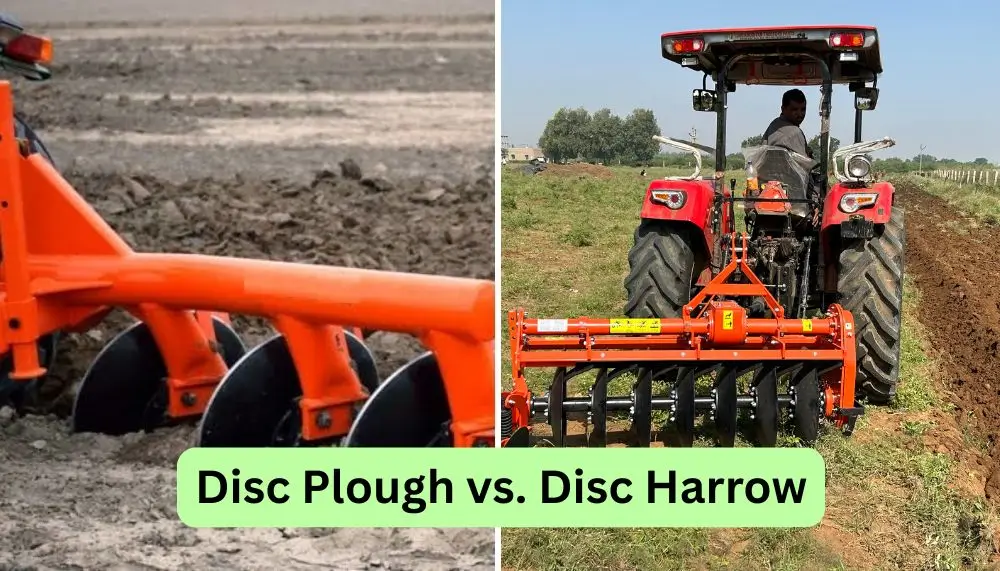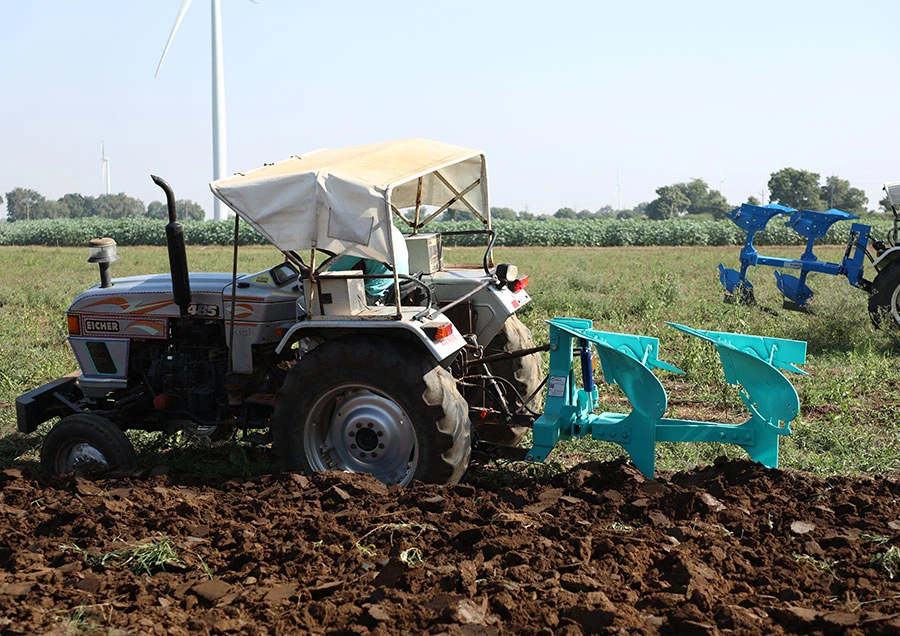Chat With Us
+91 99253 37969Disc Plough vs. Disc Harrow: Which Tool to Use and When?

In agriculture, effective soil preparation is one of the most essential steps to ensure higher crop yields. Disc plough and disc harrow are two critical components used during soil and seedbed preparation by farmers. Both machines showcase a wide range of functional benefits and serve potential results. But it is important to understand the difference between disc plough and disc harrow for their right use.
Should you use disc plough for secondary tillage? Is it beneficial to use disc harrow in clay soil? Are disc plough and disc harrow the same? And more such questions can confuse you in future.
Therefore, we have bought you a comprehensive differentiation between disc plough and disc harrow. Let's uncover the differences between these two.
A Comprehensive Differentiation Between Disc Plough and Disc Harrow
1. Purpose:
Disc Plough: Disc plough is used during primary tillage for the soil inversion process. Ploughing is the first major activity that is conducted for soil preparation, which involves loosening and turning over the soil. Disc plough is typically effective in breaking the hard soil layer through its rotating iron blades.
Disc Harrow: Disc harrow is commonly used during secondary tillage activity when primary soil preparation is over. Harrowing is the process that prepares the soil for planting. A disc harrow refines the soil by creating fine granules which further helps in aeration and weed control. Therefore, it helps in creating uniform soil layers.
2. Components
Disc Plough:
- Large and concave discs. The discs are either made of steel or cast iron and mounted on a frame.
- The axles on which the discs are mounted allow them to rotate.
- Scrapers that prevent soil from sticking to the discs.
- Beam or Frame that holds the discs and other components together.
- Three-Point Hitch which connects the plough to the tractor.
Disc Harrow:
- Concave discs are arranged in two or more gangs.
- Sets of discs mounted on a common shaft with front and rear gangs usually set at opposing angles.
- Shafts on which the discs are mounted.
- The structure that holds the gangs of discs.
- Plates to keep the discs clean.
- Three-Point Hitch or Drawbar. It connects the harrow to the tractor.
3. Mechanism
Disc Plough: A disc plough has large concave blades that rotate at 90-120 rpm to break and penetrate the soil. The plough is attached to a tractor using a 3-point hitch that provides the necessary angle for better functionality. The angled movement of blades can easily cut tough layers of soil and prepare it for plantation.
Disc Harrow: The tractor-mounted disc harrow consists of two gangs of discs mounted one behind the other. The disc on the front gang throws soil outwards and the rear gang inward. Therefore, no soil remains uncut by the offset disc harrow.
4. Working Depth
Disc Plough: The working depth of a disc plough is comparatively higher than a disc harrow. This is due to highly efficient rotating discs that provide angle penetration and deep digging functionality. The average penetration depth of a disc plough ranges between 6 to 12 inches. Therefore, it is considered an ideal plough during primary tillage activities.
Disc Harrow: As we know, a disc harrow is implemented during secondary tillage activity, therefore it operates on a decent working depth. The usual range varies between 2 to 5 inches. The thickness of blades and rotation speed can impact its working depth further.
5. Usage
Disc Plough: As we have discussed, a disc plough is generally used for primary tillage activities. The plough brings the subsoil up by turning the soil. During this process, the blades grind the hard soil layer creating soft granules. Hence, the soil becomes suitable for seedbed preparation. Moreover, a disc plough helps to remove weeds from the soil and controls soil erosion.
Disc Harrow: Harrowing helps to uniform the soil bed. A disc harrow can further cut the bigger clods into small granules to create uniformity. It not only helps in aeration but spreads the nutrients in the soil evenly. Therefore, after harrowing, plant roots can easily get nutrition and grow potentially.
6. Soil Impact
Disc Plough: Disc ploughs have a greater impact on soil layers in comparison to disc harrows. These ploughs are effective for all types of soils starting from clay to rocky soil. The concave discs cause significant soil disturbance by breaking up the clods and disrupting the formation of a rough surface. Deep soil penetration also impacts the growth of weeds and rescues crops from destruction.
Disc Harrow: The cloddy soil left after primary tillage requires refinement. Therefore, during secondary tillage disc harrow is used for creating fine soil beds. Hence, disc harrows are more impactful for soft soil types and soils that are undergoing secondary tillage activity.
Summary:
| ASPECT | DISC PLOUGH | DISC HARROW |
| Purpose | Primary Tillage | Secondary Tillage |
| Mechanism | Soil Inversion | Mixing Top Soil |
| Penetration Depth | 5 to 6 Inches | 2 to 5 Inches |
| Soil Type | Suitable for hard, compacted, and heavy soils | Suitable for previously ploughed, loose, and lighter soils |
| Weed Control | Effective | Limited |
Wrap Up
In conclusion, both disc plough and disc harrow have potential advantages in farming and help farmers in better soil preparation. However, the distinct knowledge about these two machines can help you enhance productivity and gain higher crop yields. If you facing any issues don't hesitate to connect with a disc plough manufacturer for the perfect advice.
You May Also Like:





